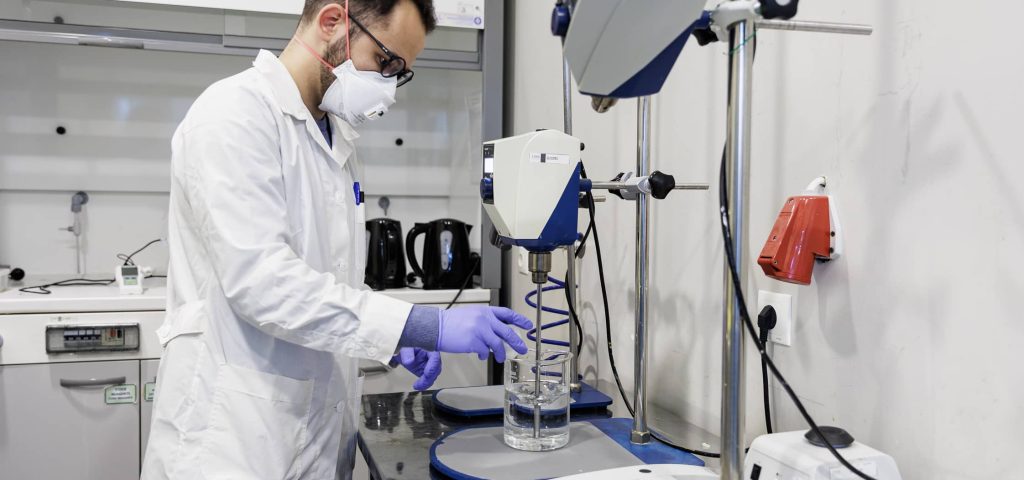High potency APIs (HPAPI) are increasingly being explored as a strategy for targeted therapy and are changing the face of the pharmaceutical industry by providing innovative solutions for the treatment of diseases. From oncological therapies to antidiabetic and CNS disorder drugs, HPAPI is enabling leaps in medical science. Despite the advantages that the use of HPAPI bring to the table, their synthesis and handling pose a series of challenges. In this blog post, we’ll explore what HPAPI is, the potential risks they pose, and how to mitigate these risks effectively for safe and efficient development.
What is an HPAPI?
An HPAPI is a Highly Potent Active Pharmaceutical Ingredient. It is a pharmaceutical compound with a low Occupational Exposure Limit (OEL), meaning that an operator can be exposed to the ingredient only for a shirt amount of time in order to avoid the risk of short and long term effects on his or her health. Therefore, highly potent APIs require specialized facilities, equipment, and personnel for safe handling and containment.
The Rise of HPAPI in Pharmaceutical Industry
The need to discover new and specific therapies has been the driving force behind the advancement of HPAPIs. Current statistics show that about 40% of the authorized drugs in the market today are classified as high potency; this is a clear pointer to the fact that people are increasingly using these powerful substances.
Additionally, these compounds exhibit their therapeutic effects at minimal quantities, making them highly effective but also contributing to a range of production complexities and safety risks. As a consequence, they are mainly used in creating drugs for treating severe diseases, with around 60% of current HPAPI-based drugs targeting cancer treatments.
The Challenges of Working with HPAPI
Despite the significant therapeutic benefits HPAPIs can bring, they often pose unique safety challenges throughout development and manufacturing. Using the appropriate occupational exposure band is crucial for categorizing HPAPIs based on their risk levels, ensuring proper handling and containment requirements.
Safety, Toxicity Concerns, and Occupational Exposure Limits
One of the most critical challenges in HPAPI manufacturing is ensuring operator safety. The highly potent nature of these compounds means that even minute exposure can lead to severe health issues. Therefore, stringent containment measures and personal protective equipment are essential.
Lack of Standardization
The absence of standardized classification and containment strategies across the industry only exacerbates the challenges, as classification systems vary across companies and regions. Each HPAPI must undergo a comprehensive risk assessment to determine the necessary safety measures, which can be both time-consuming and costly.
Small Batch Sizes
Due to their high potency, HPAPIs are produced in small volumes, which complicates the testing and validation of contamination measures. Ensuring rigorous testing and validation in small batches can hinder timely development and escalate costs.
Strategies to Overcome HPAPI Production Challenges
Overcoming the challenges of HPAPI development and manufacturing requires a multi-faceted approach. Three main strategies were employed.
Accurate Hazard Assessment
Early-stage hazard assessment is crucial for understanding the risks associated with an HPAPI. Accurate assessment helps in determining occupational exposure limits (OEL) and operational exposure banding (OEB), guiding the implementation of appropriate safety measures.
Engineering Controls and Containment Systems
Employing advanced engineering controls like specialized containment systems, including isolators and ventilated enclosures, is essential to minimize exposure. These systems help in maintaining a safe work environment and preventing contamination.
Administrative Controls and PPE
Administrative protocols, including stringent work practices and comprehensive training, are critical to mitigating risks. Personal protective equipment (PPE) such as suitable respiratory masks, gloves, and laboratory suits, provide an additional layer of safety for operators.
The Importance of Collaboration for HPAPI manufacturing
A collaborative approach is fundamental in overcoming the challenges associated with highly potent API manufacturing. Integrating a quality-by-design (QbD) approach ensures that safety measures are implemented across the production pipeline, from research and development to large-scale manufacturing. Strong collaboration between research, development, and manufacturing teams facilitates smoother transitions between stages, expediting product delivery and maintaining safety.
Looking to the Future of HPAPIs
The landscape for highly potent materials is continually evolving. The market for highly potent drugs, also known as Highly Potent APIs (HPAPIs), is growing rapidly, driven by their demand in oncology indications and cancer growth inhibitors. Future advancements may include:
Sophisticated Drug Delivery Systems: Nanoparticles, liposomes, and micelles that combine high potency with targeted delivery for maximized treatment efficacy.
Biological HPAPIs: Antibody-drug conjugates (ADCs) utilizing the specificity of antibodies to deliver therapeutics directly to target cells.
Technological Integration: Use of artificial intelligence and machine learning to optimize manufacturing processes, enhancing efficiency and quality control.
Regulatory Evolution: Emerging frameworks will likely adapt to address HPAPI production challenges, promoting innovation while ensuring safety.
While the development and manufacturing of HPAPIs offer significant therapeutic benefits, they also pose several challenges, including safety risks, lack of regulatory standardization, and the need for specialized facilities and equipment. Overcoming these challenges requires a multifaceted approach involving comprehensive hazard assessment, accurate potency and toxicity determination, and appropriate engineering and administrative controls. By adopting such strategies, pharmaceutical companies can ensure the safe and efficient production of HPAPI products, ultimately contributing to the advancement of targeted medical treatments.
FAQ About HPAPI
How can collaboration help in HPAPI manufacturing?
Collaboration between research, development, and manufacturing teams ensures the implementation of consistent safety measures, streamlining transitions between stages and expediting the development process.
How can pharmaceutical companies ensure the safety of their operators when dealing with HPAPIs?
Ensuring operator safety and safe handling involves implementing stringent containment measures, using advanced engineering controls like specialized containment equipment and ventilation systems, and providing comprehensive training on administrative controls and the proper use of personal protective equipment (PPE).
What challenges do small batch sizes present in HPAPI manufacturing?
Small batch sizes make testing and validation of contamination measures challenging. Ensuring rigorous testing and validation can be time-consuming and costly, potentially delaying the development process.
Why is standardization important in HPAPI classification and containment strategies?
Standardization in HPAPI classification and containment strategies ensures consistent risk assessment and implementation of effective safety measures. Without standardization, each HPAPI may require individual risk assessments, complicating containment strategies and increasing the potential for safety lapses.

